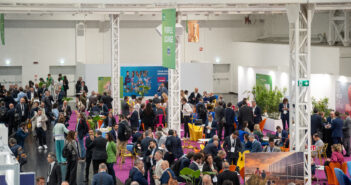As the global economy continues to be challenging on a number of fronts, it’s easy to overlook what we believe is a bright spot–a shift in the balance of economic power toward cities in emerging economies. This shift toward the east and south is happening at an unprecedented speed and scale. It will create one billion urban consumers with rising incomes by 2025, who will inject around $20 trillion in annual new spending into the world economy. And cities will have to invest in buildings and infrastructure to cater to their needs—adding another $10 trillion to global growth by 2025. Sixty percent of these consumers will live in just over 440 emerging market cities—many of them unheard of—that are set to generate nearly half of global economic growth in this period. How businesses and governments respond to these developments will shape the world economy for decades to come.
The McKinsey Global Institute’s latest analysis of 2,600 cities around the world examines in detail how new consuming classes are going to impact demand not only for individual products (such as laundry-care products, baby food etc) but also for infrastructure such as buildings, container ports, and municipal water supply. We look at the different income thresholds at which demand for individual products starts to take off and pinpoint where that consumption is most likely to happen. Take laundry care products as an example. We expect to see more sales growth of these products in São Paulo than in either France or Malaysia over the next decade. When it comes to medical devices for older people, manufacturers and suppliers of some medical products may want to identify “silver cities” with a large increase in the number of older consumers with incomes of more than $20,000. These variations only underline the need for companies to understand their target markets in forensic detail. However, a new McKinsey survey finds that only one in five executives are deciding on location based on cities rather than countries.
To cater for their new urban consumers’ needs, cities will have to invest heavily in infrastructure. We project emerging market cities to construct floor space equivalent to 85 percent of all today’s residential and commercial building stock. Global port capacity for container traffic will need to expand by more than 2.5 times from today’s level to meet the inflow and outflow of containers. Municipal water demand in large cities is expected to have to rise by 40 percent from today’s level by 2025—a rise of almost 80 billion cubic meters that is more than 20 times what New York consumes today. The global car fleet is projected to double to 1.7 billion by 2030—if you line up all these cars bumper to bumper, they’d cover 10 times the average distance between Earth and the moon. Future air traffic demand is forecasted to grow by 5 percent annually from 2010 to 2025. China alone is expected to build almost 100 new civil airports in the next ten years.
This surge in capacity building will put further strain on the world’s natural and capital resources. If managed effectively, however, it is a large opportunity not only for developers and investors but also to achieve greater resource productivity for a prolonged period.
To access the report and an interactive graphic on the 2,600 largest cities visit www.mckinsey.com/mgi
by Jaana Remes, Mckinsey Global Institute.
Top image credit : Photobank gallery


![[NEW] MAPIC interview: In conversation with Sostrene Grene CEO Mikkel Grene Sostrene-Grene](https://www.beyondretailindustry.com/wp-content/uploads/2024/03/Inside-Sostrene-Grene-store-5-1-351x185.jpg)
![[NEW] Women in Retail: 24 trailblazers for 2024 Women in retail](https://www.beyondretailindustry.com/wp-content/uploads/2024/03/image-1-351x185.png)
